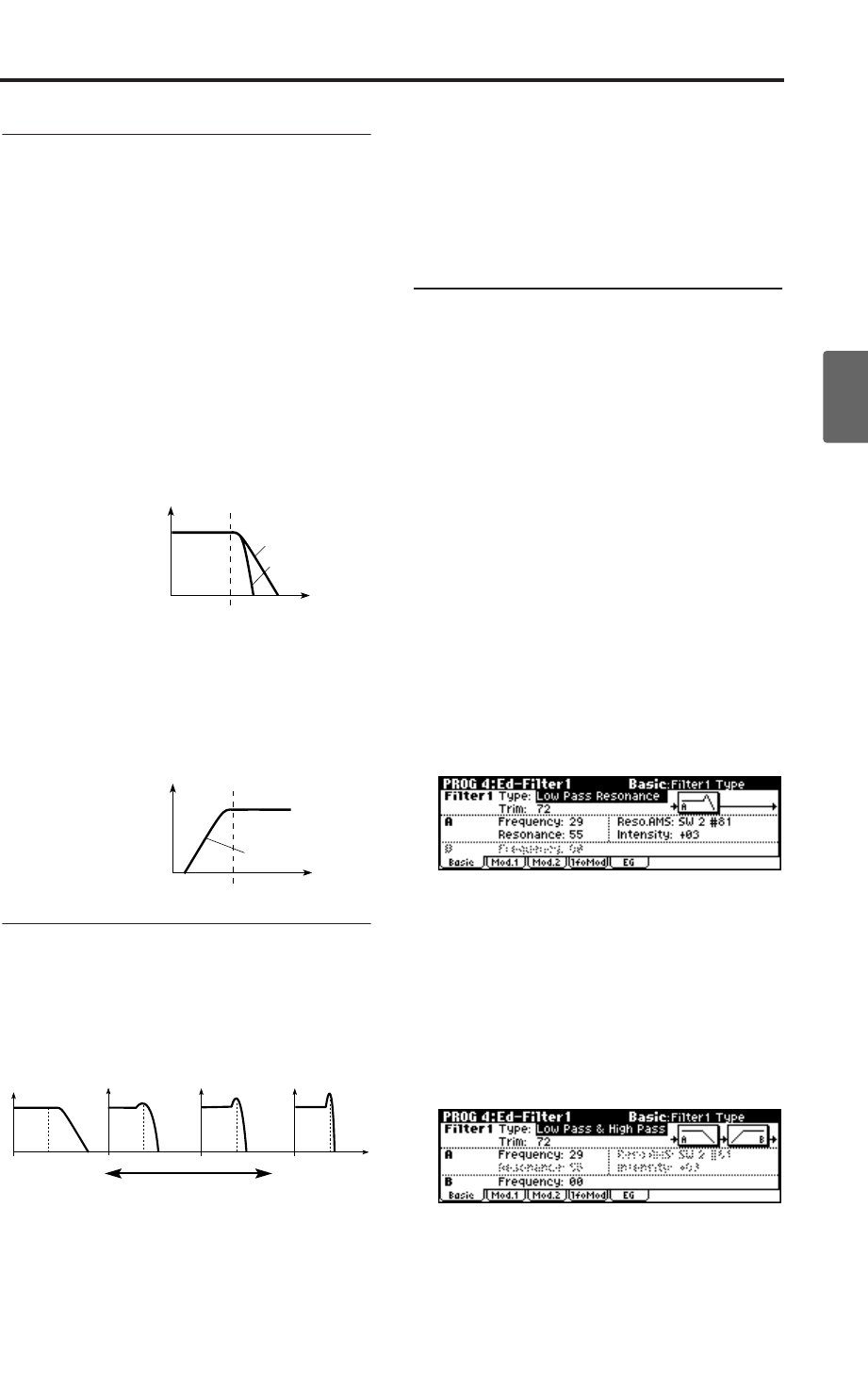
Using Filters
53
Quick StartIntroductionSetupProgram
Combination
MultiEffectGlobalArpeggiatorDrum Kit
External control
Other functions
Appendices
Filter Types
This selects the parts of the sound which will be
affected by the filter, as described below.
Low pass filter
This is the most common type of filter, which
passes the low frequency range and cuts the high
frequency range. When the overtones of the high
range are cut, a bright sound will become darker
(more mellow).
24 dB/oct and 12 dB/oct see the steepness of the
cut. 24 dB/oct means that the gain will decrease 24
dB in one octave (i.e., as the frequency doubles). A
12 dB/oct filter would decrease the gain 12 dB in
one octave. The 24 dB/oct filter produces a steeper
cut.
High pass filter
This type of filter passes the high frequency range
and cuts the low frequency range. Use this when
you wish to make the sound thinner. However if
the cutoff frequency (Frequency) is raised exces-
sively high, the volume will become very low.
Resonance
When “Resonance” is set to a higher value, the
overtones in the region of the cutoff frequency will
be boosted as shown in the diagram below, giving
a distinctive character to the sound.
When this is set to 0, there is no emphasis, and fre-
quencies beyond the cutoff will simply diminish
smoothly.
At medium settings, the resonance will alter the
timbre of the filter, making it sound more nasal, or
more extreme. At very high settings, the resonance
can be heard as a separate, whistling pitch.
To make the resonance track the keyboard pitch,
see “4–2a: Keyboard Track” (☞PG p.17).
Selecting a filter to modify the tone
Here’s how to select a filter type and adjust the
“Frequency” (cutoff frequency) and “Resonance”
(resonance level).
1. Use “Type” to select a filter type.
Low Pass Resonance: This is a 24 dB/octave
low pass filter with resonance.
Low Pass & High Pass: This is a 12 dB/octave
low pass filter and a 12 dB/octave high pass
filter connected in series.
2. If you’ve selected Low Pass Resonance as the
filter type, you can set the parameters for Filter
A.
“Frequency” specifies the cutoff frequency.
Overtones above the specified cutoff frequency
will be diminished, making the tone more
mellow (darker).
“Resonance” specifies the resonance level. This
boosts the overtones in the region of the
specified “Frequency,” giving the sound a
distinctive character.
If you’ve selected Low Pass & High Pass as the
filter type, you can use the Filter A parameters
to adjust the low pass filter and the Filter B
parameters to adjust the high pass filter.
Overtones above the Filter A “Frequency” will
be diminished, making the sound more mellow
(darker).
Overtones below the Filter B “Frequency” will
be diminished, decreasing the low-range and
making the sound thinner.
Low Pass
12dB/oct
24dB/oct
Level
Frequency
High Pass
12dB/oct
Level
Frequency
Low Pass
Level
When resonance is applied
Low resonance
value
High resonance
value


















